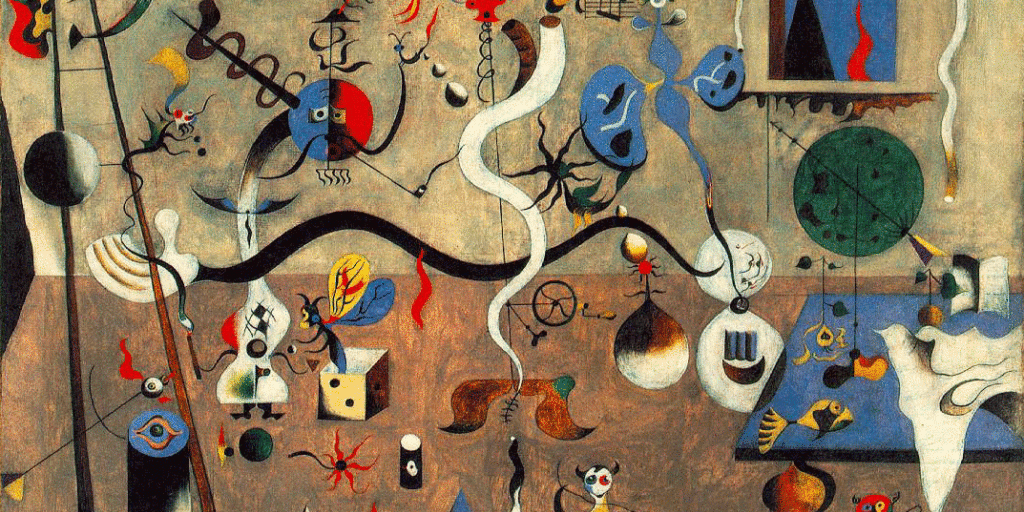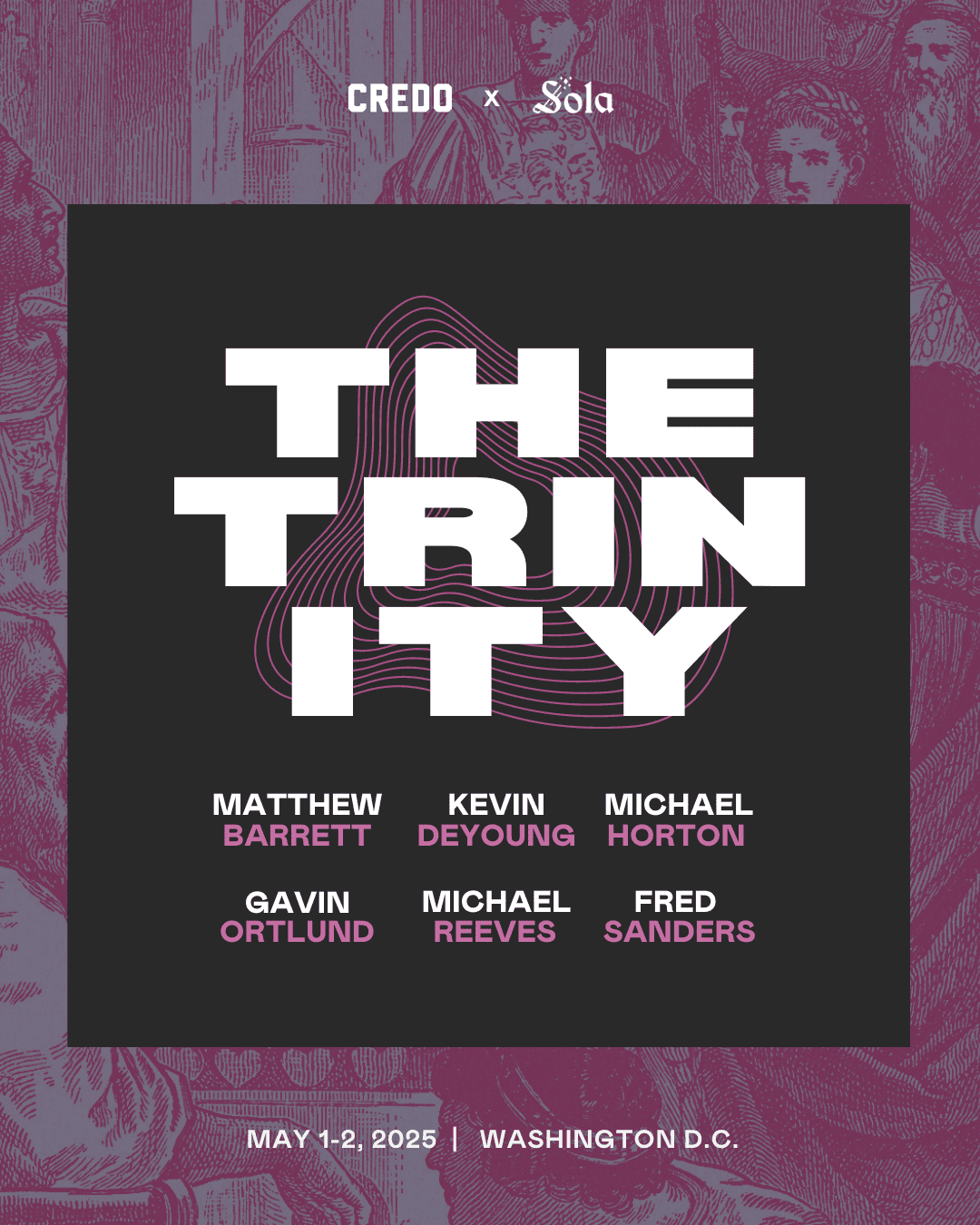
Why We Must Reject Social Trinitarianism: It is neither Nicene nor Biblical
Social trinitarianism is a fad today and when you encounter it some big flashing red lights should go off. It is popular, it is novel, and it fits like a hand in glove into the spirit of the age. So, these are signs that one must proceed with caution. I want to offer some thoughts on some things to consider before you embrace social trinitarianism.
First, social trinitarianism is a departure from the theology symbolized in the Nicene Creed.
Many people today have an over-simplified and reductionistic understanding of what the Nicene Creed teaches. There is a tendency to think that the point of the Creed is to affirm that God is Father, Son, and Spirit over against a tendency to see God as only one in a numerical sense. Some can go so far as to see Nicene trinitarianism as a refutation of the Jewish understanding of God in the Old Testament. This drives a wedge between the testaments and can lead to anti-Semitism.
From a historical perspective, the idea that the fourth-century church needed a council in 325, followed by fifty years of intense debate, ending with another council in 381 in order to determine that God is three persons equal in glory and majesty and not a mere monolithic being is ludicrous. At the start of the fourth century, the churches around the Mediterranean Basin had been worshiping Father, Son, and Holy Spirit every Sunday in worship services for about 300 years. That was a starting point everyone took for granted. We all worship the Triune God.
So, you might think, if everyone was trinitarian what was all the fuss about? Well, the issue had to do with the question of whether the Son (and Spirit) was divine in exactly the same way and to the same extent as the Father or if there were degrees of divinity. Was the Son the first and greatest creature of the Father, like the Father in being, and thus worthy of our worship? This was a position taken by the Arians. So, it is important to understand that, in this sense, the Arians were trinitarian.Just being some kind of trinitarian is not enough. It is possible to be trinitarian and not be Nicene. Share on X
So, just being some kind of trinitarian is not enough. It is possible to be trinitarian and not be Nicene. The Arians denied that the Father and Son are homoousios – one in being. So, they were the wrong kind of trinitarian as far as the Nicene fathers were concerned.
The reason the Arian position was unacceptable to the Nicene fathers was that it denies the unity and oneness of God. In other words, it denies OT monotheism, which brings us to our second point.
Second, social trinitarianism does not take Old Testament monotheism with enough seriousness.
The church of the fourth century was stiving to be biblical in its doctrine of God and in order to do so they saw that we must do justice to both the Old and the New Testaments. We cannot have an interpretation of the NT revelation of the missions of the Son and Spirit that leads us to deny the Shema. We know that the whole thrust of the apostolic preaching is that Jesus Christ is the Messiah of Israel, the fulfillment of the OT, the climax of God’s self-revelation to Israel. So, the previous revelation God had given Israel could be deepened and expanded but it could never be contradicted or left behind by new revelation. So, however we understand the relationship of the Son and Spirit to the Father, we cannot accept any understanding in which the oneness of Yahweh, the God of Israel, is compromised in any way.
Obviously, this sets a pretty high bar for any doctrine of the Trinity. It means that whatever doctrine emerges will have to be, by the nature of the case, complicated and paradoxical. It cannot contain logical contradictions, but it is necessarily going to be describing realities (the inner being of the eternal God) that lie far beyond human capacities to comprehend. Our goal, therefore, will be to rationally understand enough to worship God in spirit and in truth, while also realizing that full comprehension of the nature of God is beyond human grasp.
Take the doctrine of Divine simplicity for example. All parties to the fourth-century debates believed that God must be simple. But it is possible to have different estimations of how far, and to what degree, we understand simplicity. For the heretic Eunomius, we rationally comprehend simplicity. It means ingenerate. So, for him, some form of subordination was inevitable because only the Father could be simple since only the Father was ingenerate. But the Cappadocians came up with a different way of understanding simplicity. For them it was an “apophatic qualifier” (Paul Gavrilyuk’s term). It signifies something literally true: “God is one.” But it also describes something about God that we, as finite human beings, find it impossible to fully grasp. The mystery of the Holy Trinity is that the Son and Spirit are included within the Divine simplicity – which is one of the main points of using the term homoousios in the creed.The mystery of the Holy Trinity is that the Son and Spirit are included within the Divine simplicity Share on X
The question we must ask of social trinitarianism is this: Can such an account of the three persons do justice to the implications of the oneness of God? The Nicene fathers were extremely reticent to speak of any distinctions between the three persons other than those laid down in Scripture, namely, the relations of origin; the Father begets the Son eternally, and the Father and Son breath out the Spirit eternally. The fourth-century pro-Nicene theologians from Athanasius to the Cappadocians to Augustine all agreed that the Three have one will and act inseparably in all their works in history.
The Definition of Chalcedon sought to guard and protect the oneness in being of the Father and Son by insisting that the divine nature of the Son does not change even when it assumes into union with itself a human nature in the incarnation.
The Nicene doctrine of the Trinity seeks to teach both the oneness and the threeness of God and any doctrine that upsets this delicate balance by over-stressing the threeness threatens to distort the doctrine. In the 18th century, the chief threat was Deism, which denies the threeness. Today, the main threat is social trinitarianism, which denies the oneness. Social trinitarianism is not Nicene precisely insofar as it fails to do justice to the Biblical teaching that the LORD is one.
Third, social trinitarianism is a denial of God’s transcendence.
But we have not even considered the most troubling aspect of social trinitarianism yet. In compromising the oneness of God, modern doctrines of the Trinity collapse the crucially important conceptual distinction between the immanent (or eternal) Trinity and the economic Trinity. The distinction is between statements about the eternal being of God and statements about God’s actions in history (the economy). The problem arises from treating biblical statements about God’s actions in history as if they were statements about the inner life of God in eternity. This makes the eternal life of God historical; it drags God down into history with us. This puts God on the level of a creature and elides the Creator-creature distinction.
The doctrine of creatio ex nihilo says that God brings time and space – the entire cosmos – into existence by his Word. All that is not God was created by God and is therefore dependent on God’s Word for its origin and continued existence. This is what it means for God to be transcendent.
Social trinitarianism brings time into the eternal being of God. Or, to put it another way, it brings God into time. Yet, time itself is a creation of God. We are not so far as one might think, at this point, from panentheism, in which the creation is within the being of God. Actually, it does not matter whether one says that the creation is in God or God is in the creation because in both cases God and creation are on the same “plane of existence” (as John Webster put it). Either way, we have a form of “relational theism” in which God affects the world and the world affects God and both evolve through time together.The problem arises from treating biblical statements about God’s actions in history as if they were statements about the inner life of God in eternity. This makes the eternal life of God historical; it drags God down into history… Share on X
In the Nicene doctrine of God, the relationship between God and creation is one of Creator and creation. God is the simple, immutable, eternal, self-existent, First Cause of the universe. The creation is contingent, has a beginning, and is dependent on God for its origin and its continuation in existence. God has existence in himself necessarily, but all that is not God has existence contingently. Please note that what is often called “classical theism” today is simply a summary of what the entire church took as the true teaching of Scripture in the fourth century. It is presupposed in the Nicene Creed and it became the substance of the orthodox, Christian doctrine of God permanently.
The reason the pro-Nicene fathers were so protective of the mystery of the eternal relations of the Father, Son and Spirit and so reticent to say anything about them or how they relate or what different properties they might have is precisely to protect the eternal being of God from being historicized and dragged down to our level.
They would have been (rightly) horrified to hear talk of the “eternal functional subordination of the Son” or of the persons having distinct “properties” or of the Three eternally exerting distinct wills to interact with each other. Of course, the Son in his humanity submits to the Father in the incarnation. But the eternal Son is unified in will and being with the eternal Father. There never was a time when the Father was not the Father, nor was there ever a time when the Son was not the Son. The eternal generation of the Son does not occur in time. It is simply a window into the eternal nature of God. It is a holy truth and one that must be treated with reverence and awe. We worship the transcendent Creator and Lord of all.
___________
This short presentation certainly raises questions not answered here. I hope it sends you back to the sources to understand classical Nicene doctrine better. For more on this topic, see my book: Contemplating God with the Great Tradition: Recovering Trinitarian Classical Theism (Baker Academic, 2021).
* This article was originally published in Dr. Carter’s newsletter.

